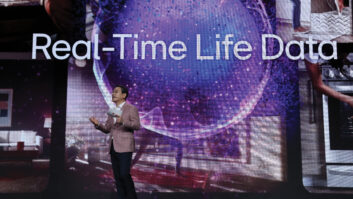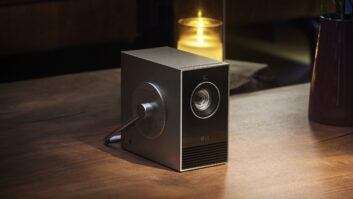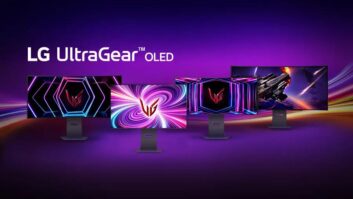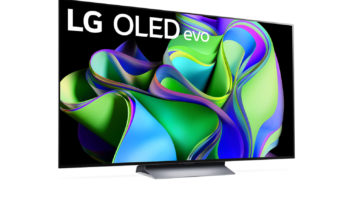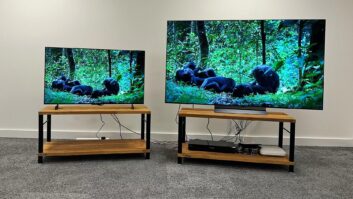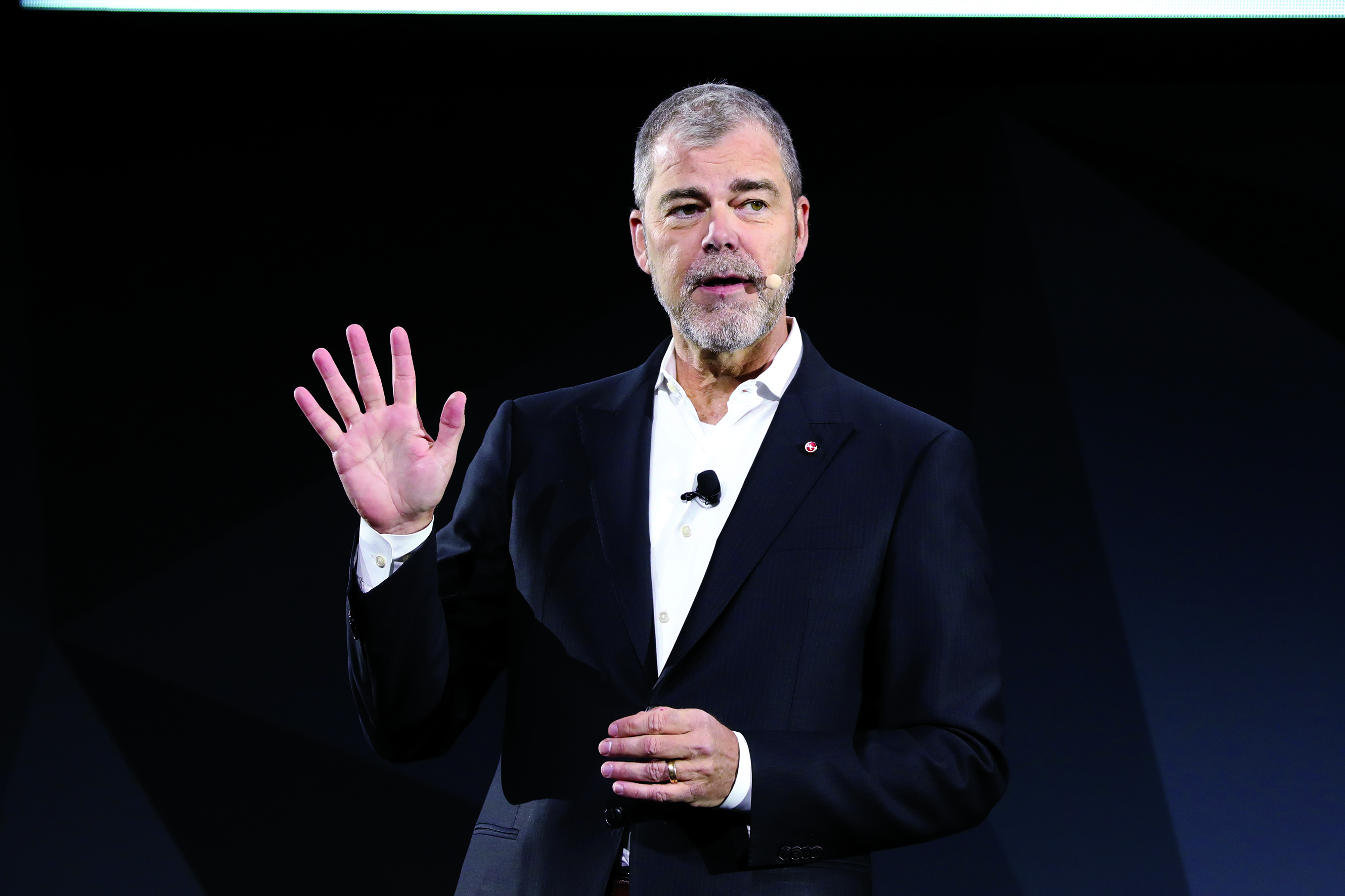
LG is integrating its ThinQ-brand artificial intelligence (AI) technology and built-in Google Assistant throughout its 2018 lineup to make routine tasks easier for consumers.
During its pre-CES press event, the company said it will bring ThinQ to all 4K OLED, 4K Super UHD and 4K UHD TVs to expand natural-language voice control to hundreds of TV functions. LG will also incorporate ThinQ in all major appliances, using AI to analyze repetitive tasks and automate them for homeowners.
Get this kind of CE coverage all year long — subscribe to the free TWICE eNewsletter.
In a washer, AI will observe frequently used washer settings, and even analyze weather changes, to adjust washer settings automatically. The settings of an AI-equipped dryer would sync up over Wi-Fi with the washer and automatically adjust its settings as well, added David VanderWaal, marketing VP for LG Electronics USA.
Air conditioners will learn a home’s living patterns to automatically adjust temperature, and AI-equipped appliances would detect issues before they become major problems and inform a customer-service center that action needs to be taken.
In TVs, ThinQ enables viewers through a microphone-equipped remote to control TV functions by voice by saying such phrases as “switch to game console.” It also enables voice search of TV content in multiple ways, such as “show me when the Match Game starts,” and it lets users search for information about a program, such as background on actors. It will also automatically optimize a display to produce the best picture for specific content.
In addition to ThinQ, LG will build Google Assistant into its 4K OLED, 4K Super UHD LCD and 4K UHD LCD TVs. Google Assistant will also be built into LG’s first smart speaker and four soundbars, enabling voice control of connected smart-home products and access to Google Assistant services. On TVs, consumers would be able to call up pictures stored in the Google Cloud and access weather and traffic information, which would appear on the TV screen.
In other key TV developments, LG is:
- adding full-array local dimming backlighting to two of three Super UHD series to enhance dynamic range and other performance measures over edge-lit local dimming.
- adding native high frame rate capability to all of its OLED and Super UHD TVs, which will play future video content with native frame rates up to 120Hz via USB inputs, HDMI inputs and embedded streaming services. On HDMI inputs, however, 120Hz frame rates will be supported only on resolutions up to 1080p.
- introducing the Alpha 9 processor in all but one series of OLED TVs to deliver up to 50 percent more processing power to enhancing the image in a variety of ways.
- offering voice control of select TV functions via a networked smart speaker with Amazon Alexa built in.




